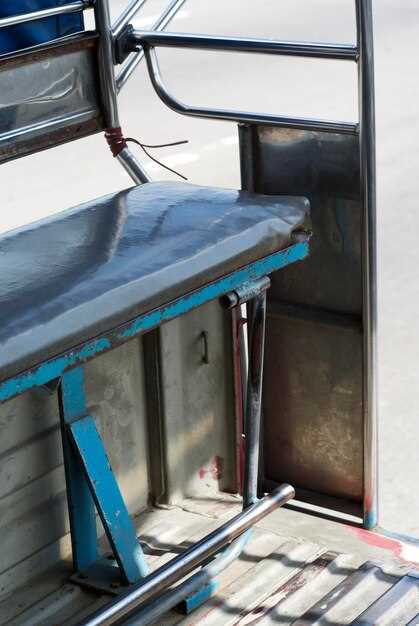
When it comes to optimizing your trailer’s storage capabilities, installing toolboxes and racks is an essential step. These installations not only enhance your organization on the road but also ensure that your tools and equipment are securely stored and easily accessible. Whether you’re a contractor, outdoor enthusiast, or weekend warrior, having the right storage solutions can make a significant difference in your trailer functionality.
In this comprehensive guide, we will walk you through the process of installing toolboxes and racks tailored to your specific needs. From choosing the right products that fit your trailer’s dimensions to understanding the tools required for installation, our instructions will provide you with the knowledge necessary to achieve a successful setup. By the end of this guide, you’ll be equipped to transform your trailer into a well-organized workhorse, ready to handle any challenge that comes your way.
Before diving into the installation process, it is crucial to assess your trailer’s needs and identify the types of toolboxes and racks that will bestserve your purposes. Customizing your storage solutions will not only enhance efficiency but also extend the longevity of your equipment. Join us as we explore the various options available and provide detailed steps to ensure a smooth installation process.
Choosing the Right Trailer Toolbox for Your Needs
Selecting the appropriate toolbox for your trailer is crucial for ensuring that your tools and equipment are securely stored and easily accessible. When choosing a toolbox, consider the size of your trailer and the types of tools you need to transport. A toolbox must fit well within the available space while providing adequate storage capacity.
Material is another important factor. Trailer toolboxes are commonly made from aluminum or steel. Aluminum is lightweight and resistant to rust, making it a popular choice for those who prioritize weight savings. Steel, on the other hand, offers enhanced durability and security but may require additional rust protection. Depending on your usage scenario and environmental conditions, choose the material that best suits your needs.
The design of the toolbox also matters. Look for features such as weather seals, reinforced edges, and locking mechanisms to protect your tools from the elements and theft. Additionally, assess whether you need a side-mount toolbox for easy access or a cross-bed option for larger items. Some toolboxes come with compartments or organizational features that can help keep your tools sorted and accessible.
Your budget will also play a role in your decision. It’s essential to find a balance between quality and cost. Investing in a higher-quality toolbox can save money in the long run by reducing the need for replacements or repairs.
Finally, consider compatibility with your trailer. Ensure that the toolbox can be easily mounted and is suitable for your specific trailer type. Reviews and ratings from other users can provide valuable insights into performance and reliability.
Step-by-Step Installation of Trailer Racks

Installing a trailer rack is essential for maximizing storage and functionality. Follow these steps to ensure a successful installation.
Step 1: Gather Necessary Tools and Materials
Before starting, collect all required tools such as a wrench, drill, level, and measuring tape. Ensure that you have the appropriate trailer rack kit and mounting hardware ready.
Step 2: Choose the Right Location
Select a suitable location on your trailer for the rack installation. It should be easily accessible, allowing for the loading and unloading of tools and equipment. Ensure that the chosen area is structurally sound and free from obstruction.
Step 3: Measure and Mark
Use measuring tape to determine the exact position for the trailer rack. Mark the mounting holes on the trailer’s surface, ensuring they are even and aligned. A level can help ensure the rack will be straight once installed.
Step 4: Drill Pilot Holes
With the marked spots in place, drill pilot holes to make it easier to attach the mounting brackets. Be cautious not to drill too deep, as this could damage the trailer.
Step 5: Attach the Mounting Brackets
Using the provided hardware, attach the mounting brackets to the trailer. Ensure that each bracket is securely fastened and check once more with a level for proper alignment.
Step 6: Install the Trailer Rack
Carefully position the trailer rack onto the attached brackets. Ensure it fits snugly and aligns perfectly with the drilled holes. Secure the rack in place using bolts and nuts as specified in the installation manual.
Step 7: Final Adjustments
Once the rack is installed, make final checks for stability. Adjust any components if necessary to achieve a solid fit. This is crucial to prevent shifting during transport.
Step 8: Load the Toolbox
After installation is complete, place your toolbox and other equipment onto the rack. Make sure everything is evenly distributed and secure before towing your trailer.
By following these steps, you can effectively install a trailer rack that enhances your towing capabilities and keeps your toolbox organized.
Maintaining Your Trailer Toolbox and Rack Setup

Proper maintenance of your trailer toolbox and rack setup is essential for ensuring longevity and functionality. Regular inspections should be conducted to identify signs of wear, rust, or damage. Check the toolbox for any loose hinges or locks, as these can compromise security. Ensure the rack is securely attached to the trailer and that no bolts or screws are missing or loose.
Cleaning your trailer toolbox is crucial to prevent dirt and debris buildup. Use a mild detergent and water to clean the interior and exterior. For metal toolboxes, apply a rust inhibitor to areas prone to corrosion. Inspect the seals and gaskets to ensure they remain watertight, preventing moisture from entering the toolbox.
It is advisable to periodically check the contents of your toolbox. Organize tools and equipment effectively, discarding any items that are no longer needed, as this can help maximize space. Ensure that the tools stored are in good condition, as damaged tools can lead to accidents during transport.
For racks, ensure that the load capacity is not exceeded. Overloading can cause structural damage or even lead to accidents on the road. Use tie-down straps and other securing mechanisms to prevent shifting during transport. Regularly inspect the rack’s condition to catch any signs of stress or fatigue.
Document maintenance tasks and observations to track the condition over time. This record will help identify recurring issues and guide future maintenance efforts. Finally, consider consulting the manufacturer’s guidelines for specific maintenance recommendations tailored to your trailer toolbox and rack.




